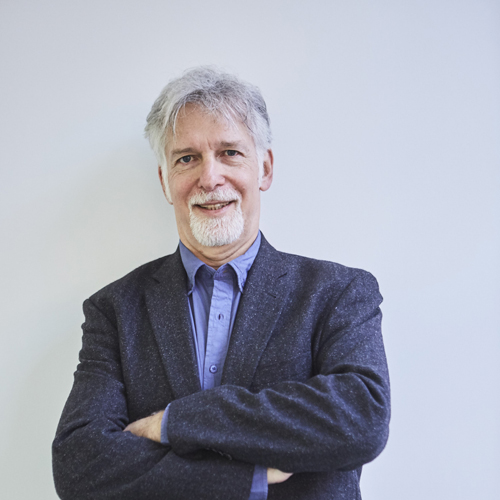Gabby Silberman
5. Kaleidoscope
Artificial intelligence (AI): an essential tool for the advancement of science

Gabby Silberman, director general of the Barcelona Institute of Science and Technology, with contributions from Núria López (ICIQ), Modesto Orozco (IRB Barcelona) and Gonzalo Merino (PIC/IFAE)
Artificial intelligence (AI) – which can generically be defined as the work done by intelligent systems capable of perceiving their environment, making autonomous decisions to achieve their goals, and ‘learning’ from the results of these actions to improve their performance – is an essential part of scientific research today in virtually every field, from biomedicine to astrophysics, chemistry or the technological applications of quantum physics.
At the Barcelona Institute of Science and Technology (BIST), many of our 178 research groups are applying or developing AI systems to advance research on various pathologies, knowledge of the cosmos or the search for new materials to fight climate change.
A few months ago, the team led by Dr Núria López-Bigas, an ICREA lecturer at IRB Barcelona, presented the tool BoostDB, based on machine-learning methods, which assesses the potential contribution to the development and progression of cancer of all possible mutations of a gene in a given tumour type. The tool can assess up to 28,000 mutations in 66 types of tumours. This information makes it possible to determine the causes of the cancer from a molecular point of view, thereby enabling more appropriate therapeutic decisions.
Also at IRB Barcelona, Dr Modesto Orozco’s team has developed the PMut web portal, a tool for predicting pathological protein mutations. The PMut portal has an archive of 725,596,928 analysed pathological and neutral variants of a total of 106,407 proteins and allows users to make their own pathology predictions, access an extensive repository of precalculated predictions, and generate and validate new predictors.
In a recent paper published in Nature Communications (https://doi.org/10.1038/s41467-021-24150-4), the team from the joint IRBB-BSC-CRG programme in Computational Biology, led by the ICREA lecturer Patrick Aloy (IRB Barcelona) and Dr Orozco, presented the use of deep neural networks to infer the bioactivity of small molecules with the aim of accelerating the development of new drugs.
Gonzalo Merino, director of the Scientific Information Port (PIC), a scientific infrastructure linked to the Institute for High-Energy Physics (IFAE), which provides support to researchers in various fields requiring the handling and analysis of large volumes of data, noted that more and more data-analysis algorithms, regardless of the discipline, are using AI and, especially, machine-learning techniques. In recent years, this process has been encouraged by the widespread use of hardware accelerators, which has made it possible to increase the volume of data analysed by several orders of magnitude.
For example, two ongoing projects with significant IFAE involvement benefit from the use of convolutional neural networks (CNNs), a type of artificial neural network mainly used for image analysis. Specifically, AI and CNNs are a key component for interpreting the images collected by the Physics of the Accelerating Universe Survey (PAUS) tool and its camera, which is equipped with a system of 40 narrow-band filters. The IFAE has participated in the development of Lumos, a deep-learning method for interpreting the photometry of these images of the galaxy.
Additionally, in the context of the VIRGO gravitational wave detector, a European project headquartered in Italy, IFAE researchers are exploring the use of CNNs to detect the gravitational wave signal resulting from the collision of black holes or neutron stars.
The study of the effects of climate change and possible responses to its impact is one of the most active fields in the application of AI. The most recent climate models are examples of data integration and the use of sophisticated algorithms to model new scenarios and the impact of environmental policies, as demonstrated by the latest report by the Intergovernmental Panel on Climate Change (IPCC).
Active measures to control climate change call for a redefinition of processes and complete treatment cycles for matter and energy, which necessarily have to be renewable. In the field of energy, AI is used to control and balance the grid load, an area in which the models have become quite complex. But improvements are needed at all levels, especially in the study of new materials that do not contain critical components (due to their rarity, cost or hazardousness, other sociopolitical issues or their location in remote and inaccessible places).
In recent years, materials research has increasingly benefited from AI techniques, mainly used in the search for new compounds for energy conversion. Examples of this include the study and optimization of photovoltaic cells based on experimental data, or the analysis of battery stability and useful life based on basic operating parameters, issues that have appeared very recently in the scientific literature and bear witness to these techniques’ potential.
At the Institute of Chemical Research of Catalonia (ICIQ), Dr Núria López’s group uses AI techniques to investigate materials and chemical reactions in three main areas: the identification of control parameters or descriptors of chemical processes to optimize and, thus, bring down production costs; quicker assessment of very complex systems, so as to reduce by several orders of magnitude the time required to reach a solution to the challenge (whilst at the same time reducing the simulations’ CO2 output); and rapid screening of materials that meet the identified descriptors.
In all these cases, duly maintained and annotated databases are needed, such as the ioChem-BD database, developed by ICIQ and hosted at the Barcelona Supercomputing Center (BSC), with a grant from the Spanish Supercomputing Network (RES), which meets the FAIR standards. With this infrastructure, it is possible to grow various analysis tools, both open and specifically designed for the problems of materials for energy production and conduction.
One of the main challenges facing BIST is to train new generations of scientists, equipping them with a human and technical vision that allows them to make the most of tools such as AI to address major social challenges, such as environmental sustainability and people’s and the planet’s health.
